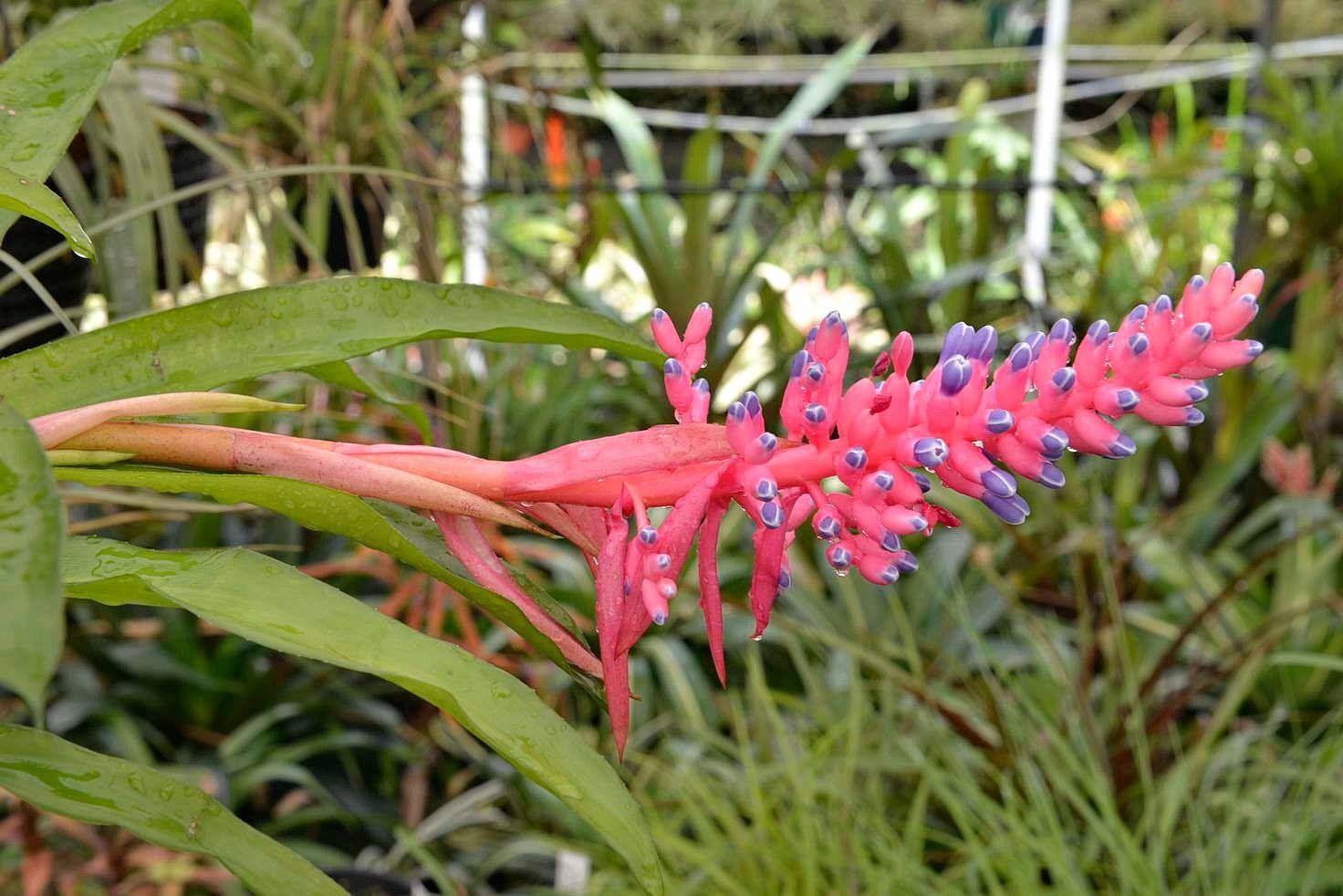
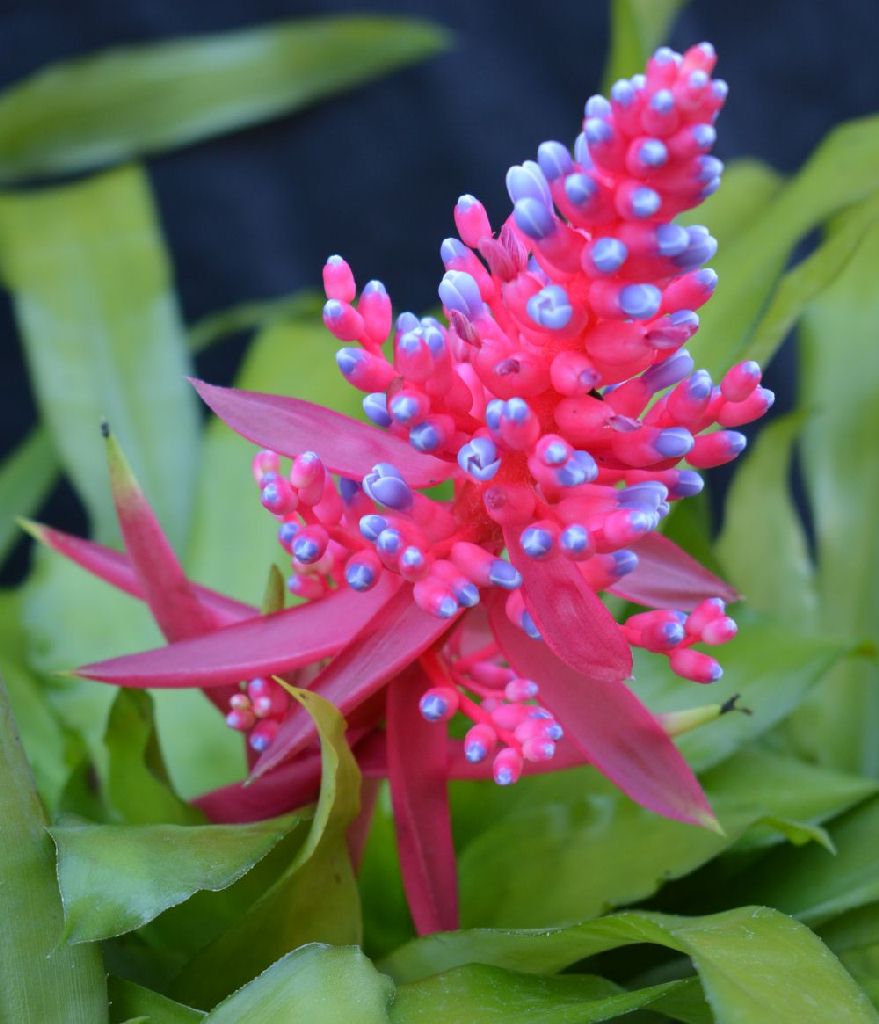
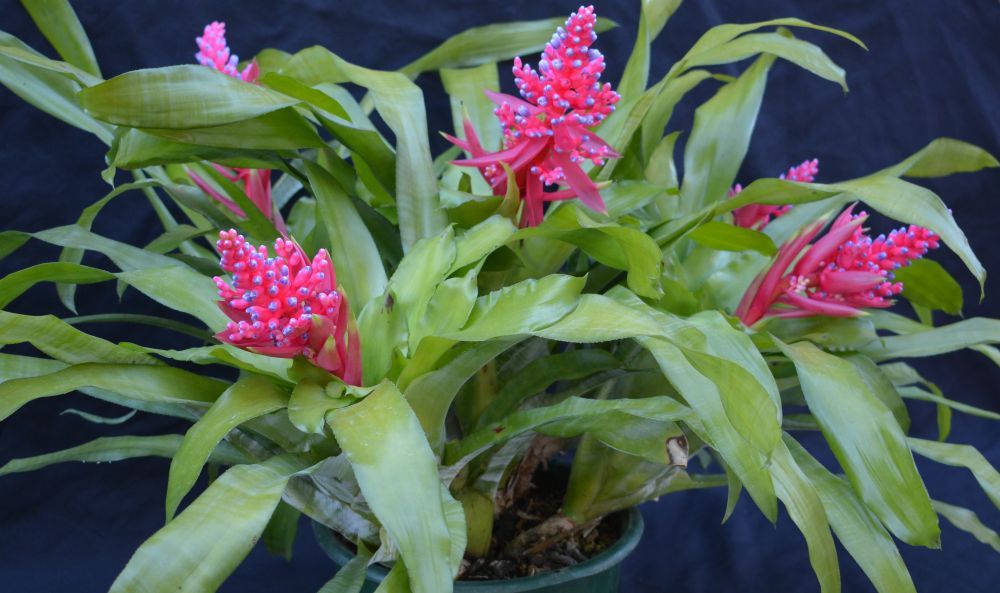
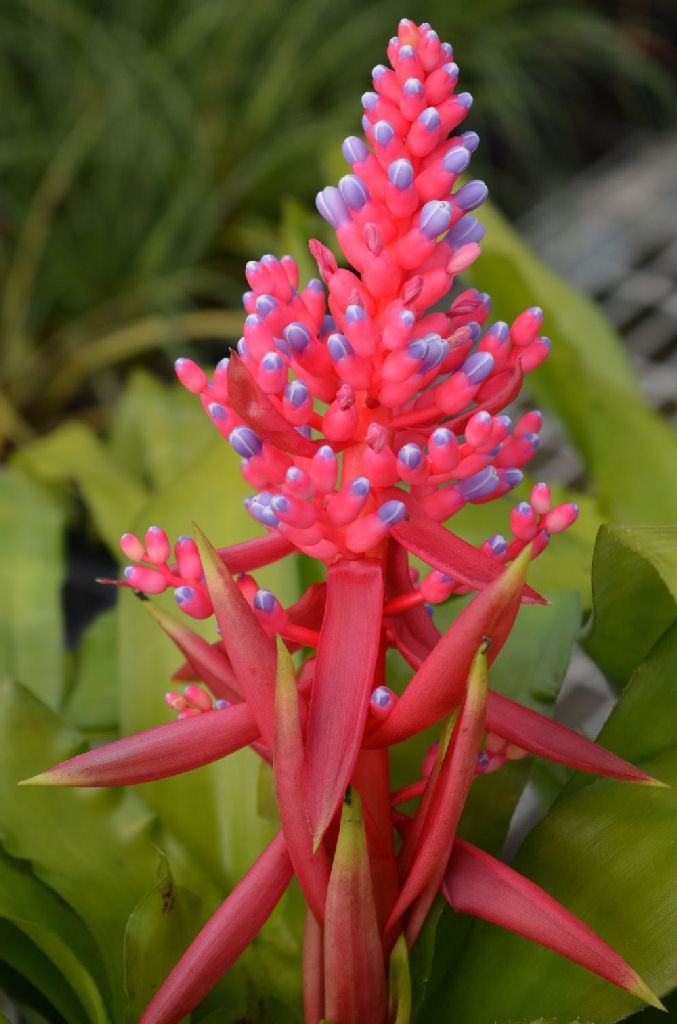
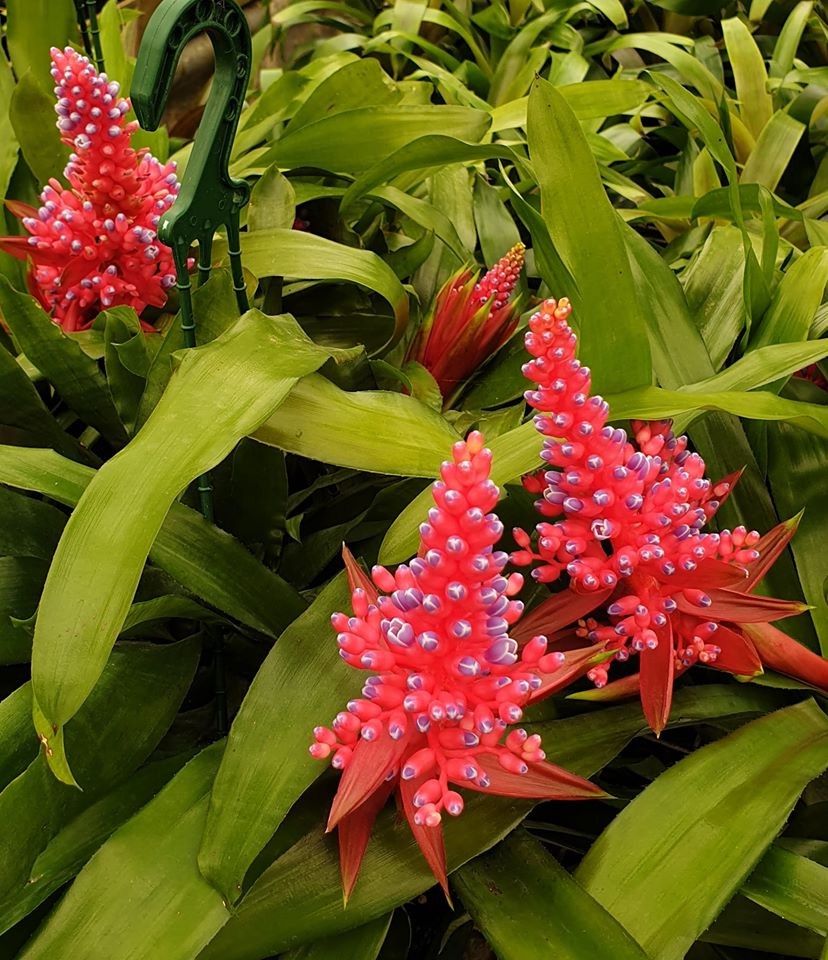
A A. fulgens Brongniart similis affinisque sed planta minore (30 cm non 40-60 cm alto), inflorescentia perminore (8-10 x 4-5 cm non l5-20 x 6-7 cm), flores minoribus (15-20 mm non 22-25 mm longis), sepalis base 2 mm connatis differt.
Type. J. Anderson & W Berg BAB 197 legit. Flowered in cultivation 15 Dec. 1997. J. Anderson s.n. (Holotype: HE; Isotype: SEL) BRAZIL. Prov. Bahia: vic. Nazare, moist restinga forest, Aug. 1997.
Plant an epiphyte, flowering 20-30 cm tall, spreading by 6-15 cm x 5-8 mm stolons. Leaves laxly spreading, 18-30 cm long, 10 to 12 in number, thin-coriaceous, bright green overall or reddish purple abaxially, somewhat glaucose abaxially.
Leaf sheaths elliptic, 6-8 x 3-4 cm, somewhat nerved, brown punctate-lepidote especially adaxially, concolorous with the blades.
Leaf blades sub-lingulate to lanceolate, acute and apiculate, 18-60 mm wide, conspicuously channeled immediately above the sheath, very laxly serrate with 0.5 mm long antrorse spines, inconŽspicuously pale punctate lepidote throughout.
Scape erect, 20-25 cm x 3-4 mm, sparsely pale floccose, reddish.
Scape bracts erect, imbricate, narrowly elliptic, 4-5 cm x 6-10 mm, very thin, nerved, entire, green tinged reddish to bright rose.
Inflorescence bipinnate, 8-10 x 4-5 cm, the lower 1/3 with 5 to 7 polystichously arranged branches.
Primary bracts like the scape bracts but abruptly reduced toward the apex, the lowest much exceeding the lateral branches, bright rose.
Branches with a 2-4 mm long naked sterile base, the rachis very slender and geniculate, distichously 2-to 5-flowered; the terminal spike densely polystichously many-flowered; the axis sparsely pale floccose, bright rose.
Floral bracts minute and ovate or completely lacking.
Flowers sessile, spreading at 45° from the axis.
Sepals obovate, very asymmetrical, 5-7 mm long, connate for ca. 2 mm, unarmed, minutely papillose, sparsely pale floccose, somewhat rugose when dried, bright rose.
Corolla erect, tubular.
Petals elliptic, obtuse, 9-12 x 3-4 mm, cucullate, each with a pair of oblong 1-2 mm long denticulate basal appendages, lavender-blue with a darker apex and a white margin.
Ovary ellipsoid, 5-8 mm long, somewhat rugose when dried, bright rose. Placentation apical. Ovules caudate.
PARATYPE: BRAZIL. Brazil: Wenceslau Guimaraes, epiphyte in wet Atlantic Forest, Mar. 1996. S. Linhares s.n. legit. Flowered in cultivation Feb. 1998. E. Leme 3349 (HB)
This beautiful new species resembles A. fulgens Brongniart from the state of Pernambuco, Brazil but is shorter (flowering 20-30 cm vs. 40 to 60 cm tall), with a smaller inflorescence (8-10 x 4-5 cm vs. 15-20 x 6-7 cm) with smaller flowers (15-20 mm vs. 22-25 mm long). In addition, the inflorescence of A. fulgens is bright red with blue-purple petals.
We refrain from describing the paratype collection as a "variety discolor" as nearly all taxa of Aechmea subgenus Lamprococcus are polymorphic for foliage color, sometimes within a single population (e.g.: A. farinosa (Regel) L.B.Smith; H.E.L., pers. obs.)
Shrinkage after drying approaches 20%, perhaps due to the delicate nature of this plant. The description takes into account these changes; the illustration is based on fresh material.
It is with pleasure that we dedicate this attractive new species to John Anderson of Corpus Christi, Texas, who has had a long-standing interest in the genus Aechmea.